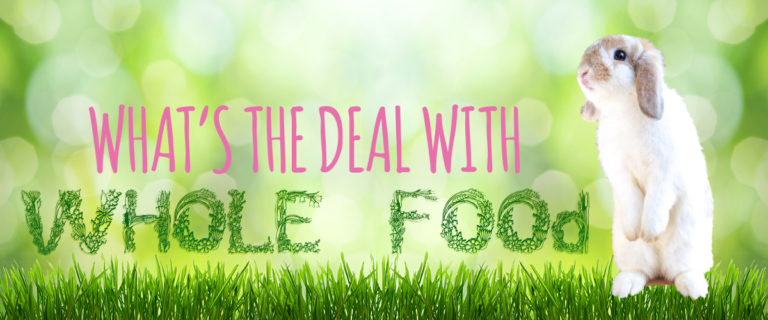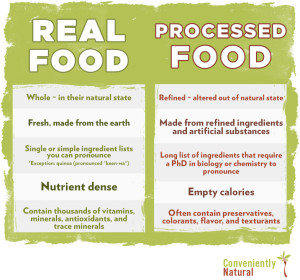
We don’t mean the chain of grocery stores. “Whole foods” means foods that are not refined or processed. Foods that looks like they did while they were growing. Foods without preservatives or additives. Really, it just means FOOD! Real, out-of-the earth food. Stuff you can dig up, or pick from a plant.
infographic credit: Conveniently Natural
The body recognizes enzymes and amino acids and fatty acids and all kinds of nutrients in a context - and sometimes, the presence of other bits and pieces of nutrition have to be present in order for all of them to be used effectively. When all the nutrients in a food are recognized and used easily, we say a food is “bioavailable”. When we isolate one nutritional bit - a vitamin, say, and take it away from its context, we take away some effectiveness. All the parts of nutrition work together. All the little bits count, and help the other bits. Co-factors, catalysts, whatever names apply to particular relationships, the whole is bigger than the parts.
Nature packages nutrition perfectly. Animal bodies (including our own!) understand how to use whole nutrition, and how to get the most out of it in the most efficient way.
If you’d like to read some more about bioavailability and whole food nutrition, you may want to start with this article by Dr. Mercola.
Photo credit: myhouserabbit.com
Our hay is fresh and great quality. Have you tried it yet? Our little friends can really benefit, though, from a more varied whole food diet. So we have herbal mixes - Vita-Vicious Essentials broad spectrum support, Forage Snacks in two varieties, and Specific Support formulas for older animals and high-anxiety situations. See the whole line here. These mixes are designed to provide the very best in whole food nutrition for your little friend.
If you have a story about how real food has helped you or your animal, we’d love to hear about it. And please share this info with anyone you think might be interested!







